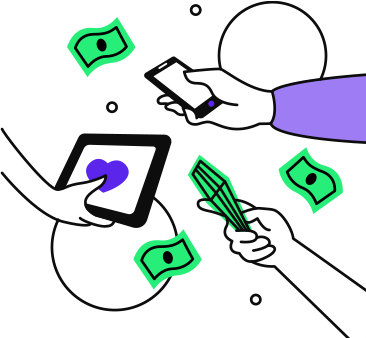Best Ways to Protect Your Apple ID from Social Engineering Attacks
Give your gadgets a new life.

At Gadget Salvation, our mission is to contribute to the electronics reselling market as much as possible so that we extend the life of our gadgets and diminish waste. Our process is simple and seamless.
Answer a few questions and get an estimate.
Ship your gadget for free.
Get paid within two business days of our receiving your gadgets.


Social engineering is one of the oldest methods of hacking into someone’s account. By definition, it’s the use of deception to manipulate an individual into revealing confidential information for fraudulent purposes. A classic example of this is a phishing attack. It involves sending an email pretending to be from a reputable company. Usually, the phishing email includes links to fake websites with forms that ask targeted victims to enter personal information like their username, password or credit card number.
Another social engineering method is through customer or tech support: someone pretends to be a support representative to trick victims into divulging sensitive information. Social engineering does not require the use of technical hacking methods. Even someone who isn’t tech-savvy can do it, which is why it’s so prevalent today and why anyone is susceptible to it. Many Apple users fall prey to this method. Even celebrities and politicians became victims of this particular hacking technique. That’s why it’s crucial to take measures to protect your account. In this article, we’ll discuss ways to keep your Apple ID safe from social engineering attacks.
Be Wary of Phishing Emails
When you receive a questionable email asking for your personal info, the first thing you need to do is check the source. Apple’s email address usually has a domain name of “@apple.com” (e.g. [email protected]). Sophisticated hackers are good at creating misleading domain names, so make sure to double-check. You should also avoid clicking links that look suspicious. Any email asking you to click a link to a site that asks you to provide sensitive information is already a red flag. Check the URL by hovering over it to see where it leads without clicking it. Knowing that phishing emails exist helps make you be more careful of any emails you receive. When in doubt, go directly to Apple’s official website and ask assistance from their customer service
Use a Two-Factor Authentication
Starting with iOS 9, Apple began implementing two-factor authentication (2FA) to make Apple IDs more secure. It’s an upgrade from the old two-step verification process and is much harder to crack. With two-factor authentication, you can only access your account through your trusted device (iPhone, iPad, Mac, or Apple Watch). If you want to access it on a new device, your trusted device will receive a six-digit code that you have to enter in the new device for verification. This particular safety measure is your most potent shield against social engineering. Under the 2FA set-up, even if someone with your account name and password still wouldn’t be able to access your account unless they’re also in possession of your trusted device. If you’re not sure how to set up two-factor authentication for your account, you may follow this guide from Apple’s official website. By being mindful of phishing attacks and by using two-factor authentication, you can protect your Apple ID. If you’re thinking of purchasing from stores that sell MacBooks and other Apple devices, you can buy with confidence knowing that Apple’s security measures can help block social engineering attacks.

Give your gadgets a new life
At Gadget Salvation, our mission is to contribute to the electronics reselling market as much as possible so that we extend the life of our gadgets and diminish waste. Our process is simple and seamless.
Answer a few questions and get an estimate.
Ship your gadget for free.
Get paid within two business days of our receiving your gadget.


